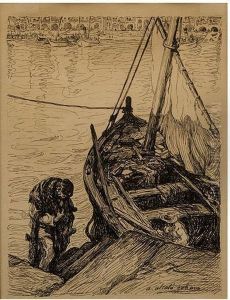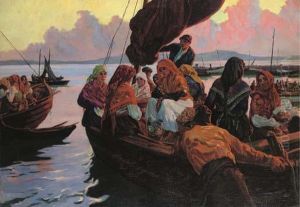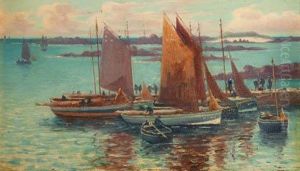Alvaro Alcala Galiano Y Vildosola Paintings
Álvaro Alcalá Galiano y Vildósola was a Spanish painter born on March 8, 1844, in Madrid, Spain. He hailed from a noble family; his father was the Duke of San Lorenzo de Valhermoso. Galiano's interest in the arts led him to pursue his studies at the Real Academia de Bellas Artes de San Fernando, which was the leading art institution in Spain at the time. His education there was fundamental in shaping his artistic style, which primarily revolved around portraiture and genre scenes.
Galiano's work was influenced by the artistic movements of the time. He was living through a period of significant change in the art world, with movements such as Impressionism beginning to take hold in the latter part of the 19th century. However, Galiano's style remained largely traditional, reflecting the academic standards of painting rather than embracing the avant-garde tendencies of his time.
Throughout his career, Galiano enjoyed a certain level of success and recognition. He exhibited his work at various important exhibitions, including the National Exhibition of Fine Arts (Exposición Nacional de Bellas Artes) in Spain. His portraits were particularly appreciated for their elegance and the skill with which he captured the likeness and character of his sitters.
In addition to his painting, Galiano also had a military career, which was not unusual for men of his social standing at the time. He balanced his artistic pursuits with his obligations as an officer in the Spanish army.
Álvaro Alcalá Galiano y Vildósola passed away on April 14, 1922, in Madrid. While he may not be as widely recognized today as some of his contemporaries, Galiano's work remains a testament to the academic art traditions of Spain during the 19th century. His paintings can still be found in private collections and occasionally appear at auction, offering a glimpse into the refined aesthetic and social milieu of his era.


